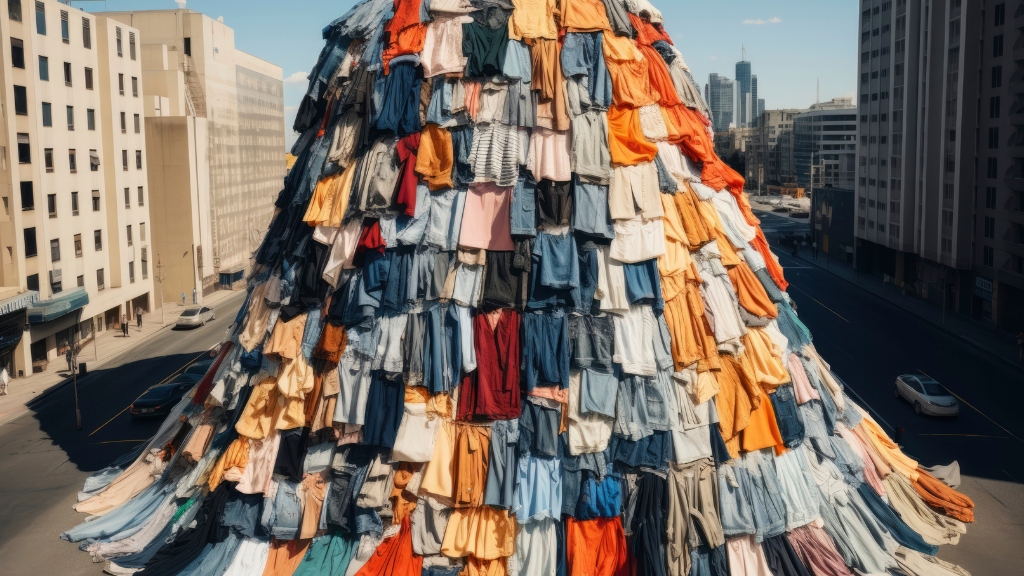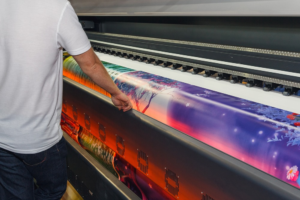The traditional textile industry follows a linear model: take, make, use, discard. This has led to massive resource depletion, pollution, and overflowing landfills with unwanted clothes. A circular economy offers a much-needed alternative. At Texcoms, we are committed to driving the adoption of circular economy practices in the textile industry. Our key focus in all our company’s practices is integrating sustainable principles throughout our operations and encouraging industry-wide collaboration.
A circular economy for textiles reimagines the entire lifecycle of clothing and fabrics. It prioritizes keeping materials in use for as long as possible. In this article, we’ll clearly understand what a Circular economy is, explore the benefits, challenges, and exciting innovations driving this movement.
What is a Circular Economy in Textiles?

A circular economy in textiles focuses on creating a closed-loop system where materials are continuously reused, recycled, and repurposed, reducing the need for virgin resources and minimizing waste. This approach contrasts sharply with the conventional linear model, which is resource-intensive and generates significant waste and pollution. This is achieved through practices like:
- Reusing and Repairing: Extending the lifespan of clothes through second-hand markets, rentals, and repair services is the most impactful approach.
- Design for Disassembly: Clothing designed for easy disassembly allows for simpler material recovery later.
- Design for Longevity and Reusability: Creating garments with high-quality materials, classic styles, and repairable construction extends their lifespan and encourages reuse.
- Sustainable Sourcing: Using recycled fibers, organic materials, and minimizing harmful chemicals reduces the environmental impact from the very beginning of the production chain.
- Efficient Manufacturing Processes: Optimizing resource use during production, minimizing water and energy consumption, and reducing waste generation contribute to a more sustainable system.
- Product Life Extension: Encouraging practices like repair, refurbishment, rental services, and second-hand clothing markets keep garments in use for longer.
- Recycling and Upcycling: Recycling textiles into new fibers or upcycling them into new products recovers valuable materials and reduces waste.
- Consumer Engagement: Educating consumers about sustainable clothing choices, proper garment care, and responsible disposal habits is crucial for a successful circular economy.
Benefits of a Circular Textile Economy: A Deeper Dive
Reduced Environmental Impact:
A circular textile economy offers significant environmental benefits by:
- Preserving Resources: Less virgin materials like cotton or polyester need to be extracted, reducing strain on ecosystems and natural resources.
- Conserving Water and Energy: Production of new textiles is water and energy-intensive. A circular economy minimizes this by reusing and recycling existing materials.
- Minimizing Landfill Waste: Tons of unwanted clothes end up in landfills each year. A circular approach diverts textiles from landfills through reuse and recycling, reducing methane emissions and pollution.
Economic Opportunities:
The shift towards circularity opens doors for new economic opportunities:
- Job Creation: New sectors like repair, resale, and innovative recycling technologies will require skilled workers, thus boosting employment.
- Innovation: Investment in research and development of better recycling processes and sustainable materials will drive innovation in the textile industry.
- Resource Efficiency: Businesses can save costs by utilizing recycled materials and minimizing waste generation throughout the production cycle.
Increased Value for Consumers:
Consumers benefit in several ways from a circular textile economy:
- Affordability: Second-hand clothing markets and rental services provide access to quality clothing at lower costs compared to buying new.
- Quality and Durability: Emphasis on design for longevity can lead to more well-made garments that last longer.
- Sustainable Choices: Consumers gain access to a wider range of sustainable clothing options, therefore allowing them to make eco-friendly choices.
Tangible Changes and Innovations Driving the Circular Textile Economy

The good news is that the concept of a circular textile economy isn’t just wishful thinking. Several exciting advancements are propelling this movement forward:
Recycling on the Rise:
- Advanced Recycling Technologies: Breakthroughs in mechanical and chemical recycling are allowing us to efficiently convert textile waste into usable fibers again. These improved processes can handle a wider range of fabrics, including those fabric blends that used to be unrecyclable.
Biodegradability for a Greener Future:
- Biodegradable Materials: The development of innovative bio-based fibers and fabrics offers a solution for textiles at the end of their lifespan. These materials can decompose naturally, therefore minimizing their environmental footprint.
- Regenerative Agriculture: Sustainable farming practices for natural fibers like organic cotton and hemp are gaining traction. These methods not only improve soil health but also enhance biodiversity to create a more sustainable system.
Digital Solutions for a Connected Industry:
- Digital Platforms for Second-Hand Clothing: Online marketplaces and apps are making it easier than ever to buy and sell pre-owned clothes. This extends the lifespan of garments and reduces the need for new production.
- Circular Business Models: Subscription services and clothing rental options are becoming increasingly popular. Consumers gain access to a wider wardrobe without the burden of ownership, a more resource-efficient system.
Closing the Loop on Production:
- Closed-Loop Supply Chains: Forward-thinking companies are establishing closed-loop systems where used textiles are collected, recycled, and put back into production. This not only reduces waste but also creates a reliable source of recycled materials for future clothing.
Sustainable Production Methods:
- Eco-Friendly Dyeing and Finishing: Innovations in dyeing and finishing techniques are minimizing the environmental impact of textile production. Waterless dyeing and digital printing processes are reducing water consumption and harmful chemical use.
These tangible changes and innovations offer a glimpse into a more sustainable future for the textile industry. By embracing these advancements and fostering collaboration across the industry, we can move towards a circular economy that benefits both the environment and consumers.
The Road Ahead
Collaboration between businesses, policymakers, and consumers is the way to go for a successful transition to a circular textile economy. Discover the sildenafil content in various medications. Learn about the differences between generic options available. For detailed sildenafil usage guidelines, visit http://treasurevalleyhospice.com/do-i-need-a-prescription-for-viagra.pdf Understanding medication is key to safe and effective treatment. Research and development in recycling technologies, along with promoting sustainable consumption habits, are key drivers of progress.
The textile industry is in the middle of a huge shift. The linear “take-make-dispose” model is unsustainable, but a circular future is not too far. At Texcoms, we are firmly committed to being a part of the solution.
We believe that a successful transition requires a collaborative effort. Businesses like ours need to integrate sustainable principles throughout our operations, but we can’t do it alone. Policymakers need to create incentives for circular practices, and consumers must embrace a more mindful approach to clothing.
Here’s what you as an individual can do to be a part of the change:
- Support brands committed to circularity. Look for companies using recycled materials, offering repair services, or promoting second-hand clothing.
- Extend the life of your clothes. Wash garments properly, learn basic repairs, and swap or sell clothes you no longer wear.
- Embrace pre-loved clothing. Explore second-hand stores and online platforms for unique and affordable finds.
- Educate yourself and others. Share your knowledge about circular fashion with friends and family.
By working together, we can transform the textile industry into a closed-loop system that benefits the environment, creates jobs, and offers consumers a wider range of sustainable clothing options.
Let’s rewrite the story of textiles. Let’s embrace a circular future.


